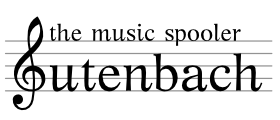| 1 | <!DOCTYPE html PUBLIC "-//W3C//DTD XHTML 1.0 Transitional//EN" |
|---|
| 2 | "http://www.w3.org/TR/xhtml1/DTD/xhtml1-transitional.dtd"> |
|---|
| 3 | <html xmlns="http://www.w3.org/1999/xhtml" |
|---|
| 4 | xmlns:py="http://genshi.edgewall.org/" |
|---|
| 5 | xmlns:xi="http://www.w3.org/2001/XInclude"> |
|---|
| 6 | |
|---|
| 7 | <xi:include href="master.html" /> |
|---|
| 8 | |
|---|
| 9 | <head> |
|---|
| 10 | <meta content="text/html; charset=UTF-8" http-equiv="content-type" py:replace="''"/> |
|---|
| 11 | <title>Learning TurboGears 2.0: Quick guide to authentication.</title> |
|---|
| 12 | </head> |
|---|
| 13 | |
|---|
| 14 | <body> |
|---|
| 15 | ${sidebar_top()} |
|---|
| 16 | ${sidebar_bottom()} |
|---|
| 17 | <div id="getting_started"> |
|---|
| 18 | <h2>Authentication & Authorization in a TG2 site.</h2> |
|---|
| 19 | <p>If you have access to this page, this means you have enabled authentication and authorization |
|---|
| 20 | in the quickstart to create your project.</p> |
|---|
| 21 | <p> |
|---|
| 22 | The paster command will have created a few specific controllers for you. But before you |
|---|
| 23 | go to play with those controllers you'll need to make sure your application has been |
|---|
| 24 | properly bootstapped. |
|---|
| 25 | This is dead easy, here is how to do this: |
|---|
| 26 | </p> |
|---|
| 27 | |
|---|
| 28 | <span class="code"> |
|---|
| 29 | paster setup-app development.ini |
|---|
| 30 | </span> |
|---|
| 31 | |
|---|
| 32 | <p> |
|---|
| 33 | inside your application's folder and you'll get a database setup (using the preferences you have |
|---|
| 34 | set in your development.ini file). This database will also have been prepopulated with some |
|---|
| 35 | default logins/passwords so that you can test the secured controllers and methods. |
|---|
| 36 | </p> |
|---|
| 37 | <p> |
|---|
| 38 | To change the comportement of this setup-app command you just need to edit the <span class="code">websetup.py</span> file. |
|---|
| 39 | </p> |
|---|
| 40 | <p> |
|---|
| 41 | Now try to visiting the <a href="${tg.url('/manage_permission_only')}">manage_permission_only</a> URL. You will be challenged with a login/password form. |
|---|
| 42 | </p> |
|---|
| 43 | <p> |
|---|
| 44 | Only managers are authorized to visit this method. You will need to log-in using: |
|---|
| 45 | <p> |
|---|
| 46 | <span class="code"> |
|---|
| 47 | login: manager |
|---|
| 48 | </span> |
|---|
| 49 | </p> |
|---|
| 50 | <p> |
|---|
| 51 | <span class="code"> |
|---|
| 52 | password: managepass |
|---|
| 53 | </span> |
|---|
| 54 | </p> |
|---|
| 55 | </p> |
|---|
| 56 | <p> |
|---|
| 57 | Another protected resource is <a href="${tg.url('/editor_user_only')}">editor_user_only</a>. This one is protected by a different set of permissions. |
|---|
| 58 | You will need to be <span class="code">editor</span> with a password of <span class="code">editpass</span> to be able to access it. |
|---|
| 59 | </p> |
|---|
| 60 | <p> |
|---|
| 61 | The last kind of protected resource in this quickstarted app is a full so called <a href="${tg.url('/secc')}">secure controller</a>. This controller is protected globally. |
|---|
| 62 | Instead of having a @require decorator on each method, we have set an allow_only attribute at the class level. All the methods in this controller will |
|---|
| 63 | require the same level of access. You need to be manager to access <a href="${tg.url('/secc')}">secc</a> or <a href="${tg.url('/secc/some_where')}">secc/some_where</a>. |
|---|
| 64 | </p> |
|---|
| 65 | </div> |
|---|
| 66 | </body> |
|---|
| 67 | </html> |
|---|
